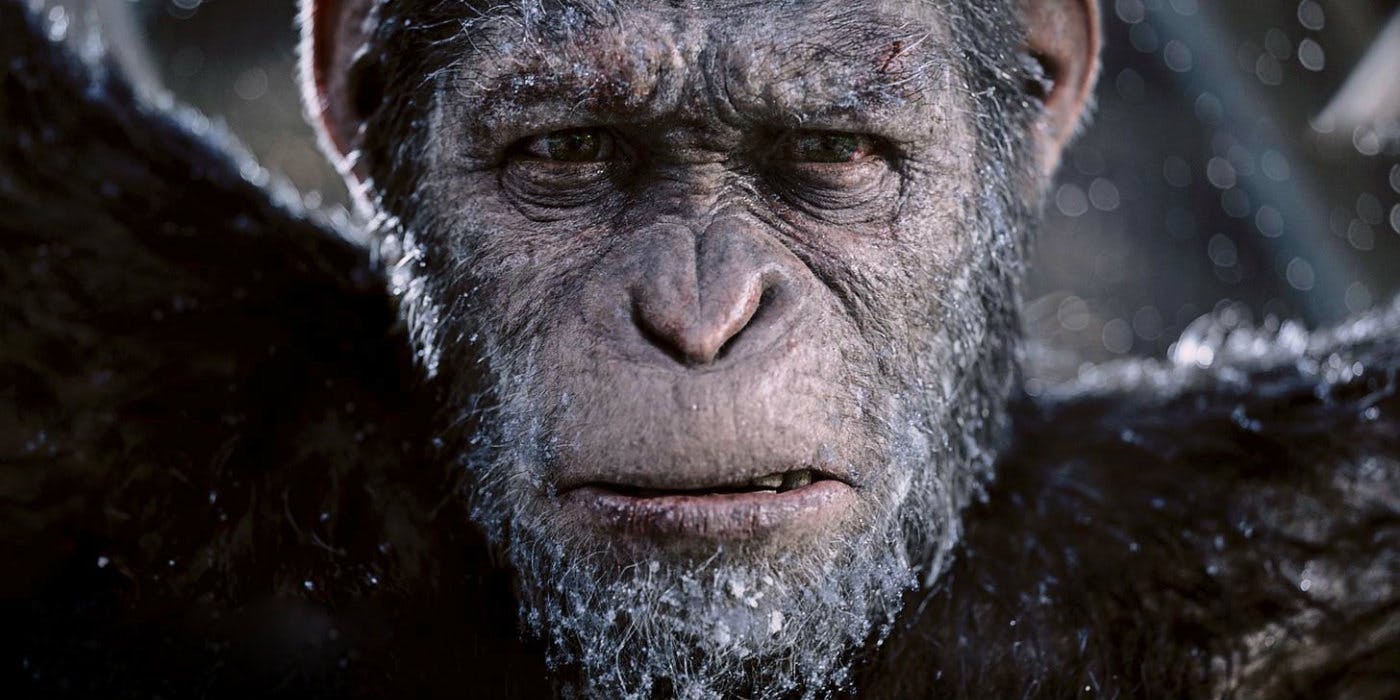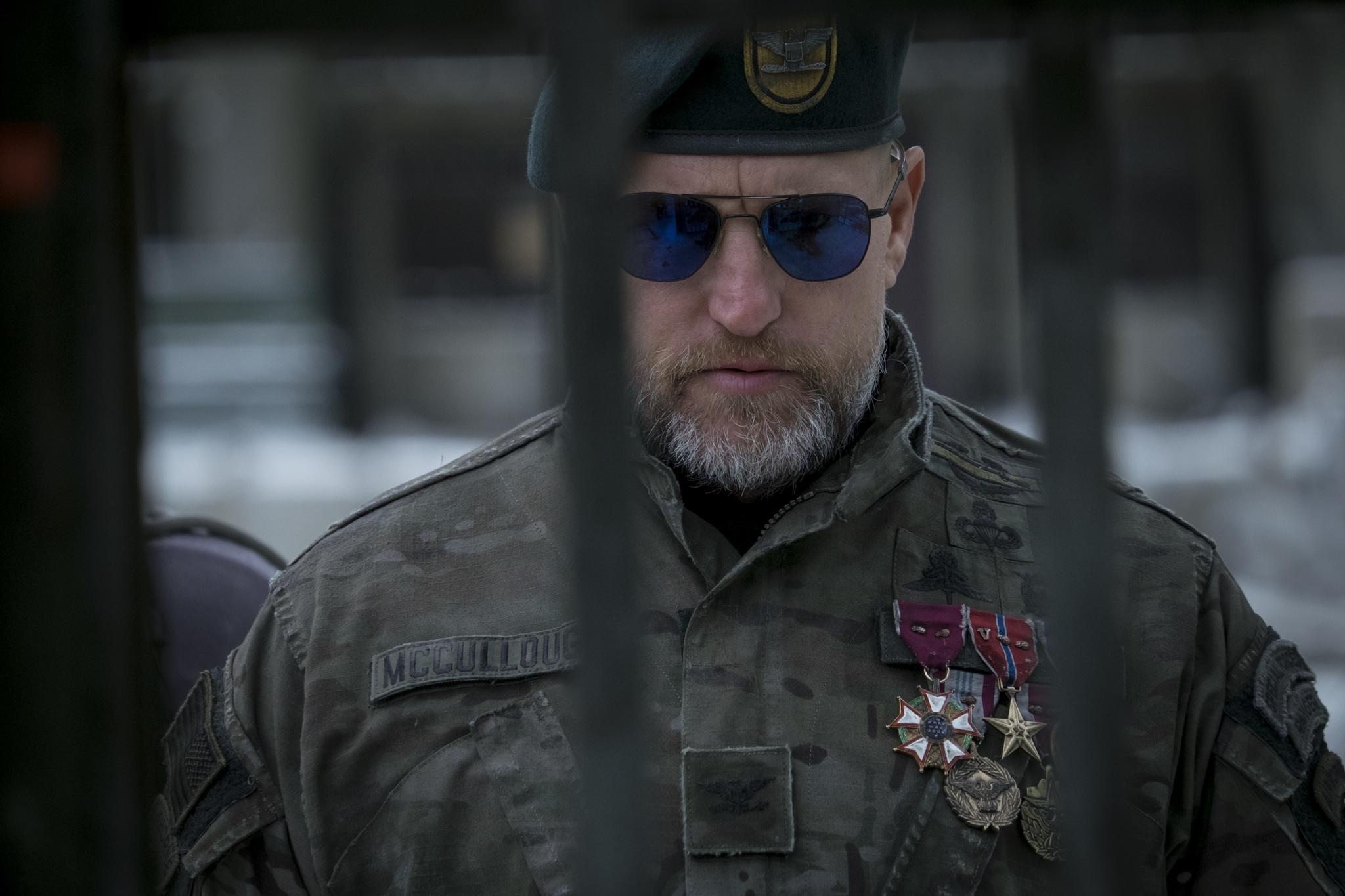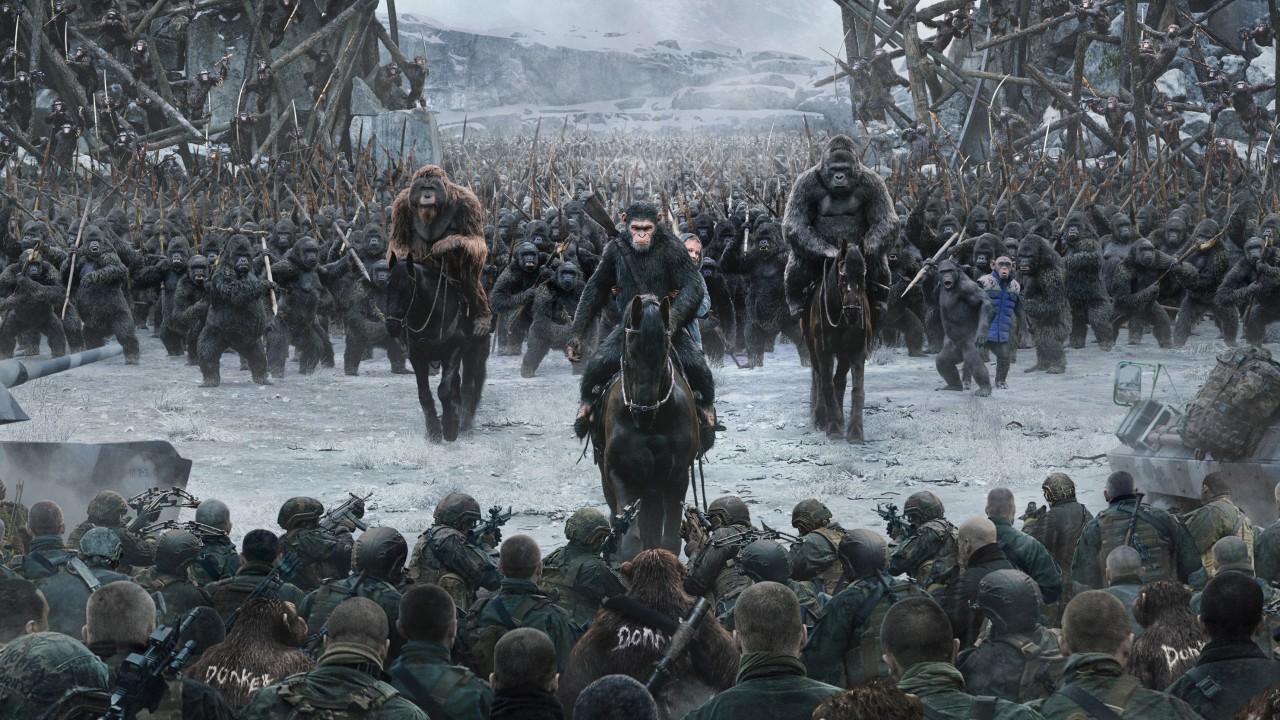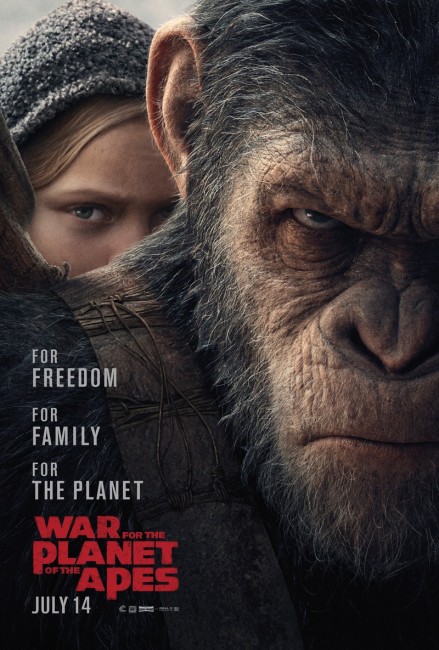USA. 2017.
Crew
Director – Matt Reeves, Screenplay – Mark Bomback & Matt Reeves, Producers – Peter Chernin, Dylan Clark, Rick Jaffa & Amanda Silver, Photography (3D) – Michael Seresin, Music – Michael Giacchino, Senior Visual Effects Supervisor – Joe Letteri, Visual Effects Supervisors – Anders Langland, Dan Lemmon, Luke Millar & Erik Winquist, Animation Supervisor – Daniel Barrett, Visual Effects – Blur (Supervisor – Dan Akers), Exceptional Minds, MPC (Supervisor – Arundi Asregadoo) & Weta Digital Ltd. (Supervisor – Mark Gee), Special Effects Supervisor – Joel Whist, Production Design – James Chinlund. Production Company – Chernin Entertainment.
Cast
Andy Serkis (Caesar), Woody Harrelson (Colonel McCullough), Steve Zahn (Bad Ape), Amiah Miller (Nova), Karin Konoval (Maurice), Terry Notary (Rocket), Michael Adamthwaite (Luca), Ty Olsson (Red Donkey), Gabriel Chevarria (Preacher), Aleks Paunovic (Winter), Sara Canning (Lake), Judy Greer (Cornelia), Devyn Dalton (Cornelius), Toby Kebbell (Koba), Alessandro Juliani (Spear), Max Lloyd-Jones (Blue Eyes)
Plot
Caesar and the apes are hunted by human soldiers led by The Colonel, who are aided by several apes that have become subservient to them. After a sortie finds them in the woods, Caesar refuses to kill the soldiers and instead sends them back, saying he does not want war. Other soldiers break in to the encampment and Caesar discovers The Colonel has murdered his wife and son. Caesar sends the rest of the apes far away to safety while he sets out on a path of vengeance to kill The Colonel. Maurice, Luca and Rocket accompany him. Maurice insists they bring along a young mute child after Caesar shoots her father. They find The Colonel’s compound where apes have been enslaved to build a wall against the forces of another human contingent that The Colonel has rebelled against. Caesar is captured after trying to stir the apes to rebellion. He becomes aware that The Colonel is attempting to eliminate all who are infected with a virus that is causing humans to regress and become mute.
The original Planet of the Apes series was one of the great science-fiction sagas. The first film, the Charlton Heston starring Planet of the Apes (1968), was an enormous success. 20th Century Fox spun it out into a series of films that went back in time to explain how the ape-ruled future came to be in Beneath the Planet of the Apes (1970), Escape from the Planet of the Apes (1971), Conquest of the Planet of the Apes (1972) and Battle for the Planet of the Apes (1973). There were also two tv series spinoffs that stood outside regular continuity with the live-action Planet of the Apes (1974) and the animated Return to the Planet of the Apes (1975).
Tim Burton conducted a remake of the original with Planet of the Apes (2001) but this was hated by almost everybody who saw it. 20th Century Fox then conducted a reboot of the series with Rise of the Planet of the Apes (2011), which proved a success and was followed by Dawn of the Planet of the Apes (2014) and War of the Planet of the Apes here. The reboot series took the position of very loosely following the internal chronological timeline of the series showing how ape intelligence began and the path that led to the ape-dominated future.
War of the Planet of the Apes follows the habit established by the two previous entries of reworking elements from the original 1960s/70s film series. The titular war sort of shadows the conflict between apes/humans and mutants that we had in Battle for the Planet of the Apes. Woody Harrelson’s bald-headed general looks somewhat similar to Severn Darden’s Inspector Kolp in Battle, while his relationship with Caesar and maintenance of an enslaved ape population is reminiscent of Don Murray’s Governor Breck from Conquest.

We get the introduction of characters who have played parts in the earlier 1960s/70s films – Caesar now has a son he names Cornelius (which was Roddy McDowall’s character in the first and third films); and the mute child that Maurice adopts is given a ornamented buckle that says Nova with the implication that she will become the equivalent of the woman that accompanied Charlton Heston in the first two films.
The major new plot point we get this time is the introduction of a virus that is rendering humans mute with the implication that this leads to the ape-dominated future that we saw in the 1968 original. You could even draw a comparison between the oval underground tunnels covered in graffiti that we have here and the similar ones in the underground ruins in Beneath. There is also the proposed journey across a vast reach of desert that the apes start out on here and seem to have reached by the end, which you could imagine becoming The Forbidden Zone in successive chapters.
Matt Reeves, who previously directed Dawn of the Planet of the Apes, is back. (See below for Matt Reeves’ other films). In both of his Planet of the Apes films, Reeves does extraordinary things. War of the Planet of the Apes is certain to be overlooked at awards time but it features motion capture technology at the absolute peak of the form. Even more so than before, the apes become amazingly detailed and expressive characters. At least three-quarters of the characters on screen are apes – and there are almost no scenes where they do not appear. Each comes with a distinctive character and range of expressions.

I awarded Andy Serkis and the accompanying army of CGI artists the Best Actor award on the site’s Best of 2014 Awards and could just as easily do so again, even though the film leaves you confused as to whether you are watching an actor performing or CGI artists creating what is essentially an animated character. It is both and neither at the same time, some completely new synthesis of both. The range of expressions that play across Caesar’s face as we see his hurt turn to rage at finding The Colonel has killed his wife and child make for extraordinary acting no matter what you want to call the performance. The same could be said just as equally for any of the other ape performances throughout.
Indeed, the ape performances become such that War of the Planet of the Apes is almost entirely a film that is built up of heart-tugging moments designed to make you go “awww”. My viewing companion was frequently in tears throughout and it was hard to resist the urge to join in. The oddity of the film is that all its beats are soft, tender moments and the big shootouts and explosions that would hold excitement in another film seem almost irrelevant here.
The film is filled with beautiful, tender scenes like where Maurice comes across young Amiah Miller sheltered in the hut and the genteel wisdom with which he persuades Caesar that they need to take her with them; images like where Luca reaches up and plucks a blossom to place in Amiah’s hair; where Nova brings water and food to where Caesar is locked in a cage; or Red Donkey’s eventual rising up against his slavemasters. The final scene of the film is one that will be guaranteed to leave few dry eyes in the house. The maturity of effects technology and depth of emotion that they bring forth make for an extraordinary piece of filmmaking.

Director Matt Reeves is a former J.J. Abrams associate, who co-created the early Abrams tv series Felicity (1998-2002) before directing the Abrams-produced Found Footage monster movie Cloverfield (2008) and then going on to Let Me In (2010), the remake of a Swedish vampire film, and subsequent to this The Batman (2022). Reeves had made his directorial debut with one of the segments of the sf anthology Future Shock (1994). He also wrote the script for Under Siege 2: Dark Territory (1995) and produced 10 Cloverfield Lane (2016), The Cloverfield Paradox (2018), Mother/Android (2021) and the SF tv series Away (2020) and Tales from the Loop (2020- ).
The script comes from husband and wife duo of Rick Jaffa and Amanda Silver. Their other works include the other two films in the Planet of the Apes reboot trilogy, plus Eye for an Eye (1996), the monster movie The Relic (1997), Jurassic World (2015), In the Heart of the Sea (2015), Mulan (2020) and Avatar: The Way of Water (2022). Silver on her own wrote The Hand That Rocks the Cradle (1992).
(Winner for Best Film in this site’s Top 10 Films of 2017 list. Winner for Best Special Effects, Nominee for Best Actor (Andy Serkis), Best Supporting Actor (Steve Zahn) and Best Supporting Actress (Amiah Miller) at this site’s Best of 2017 Awards).
Trailer here

